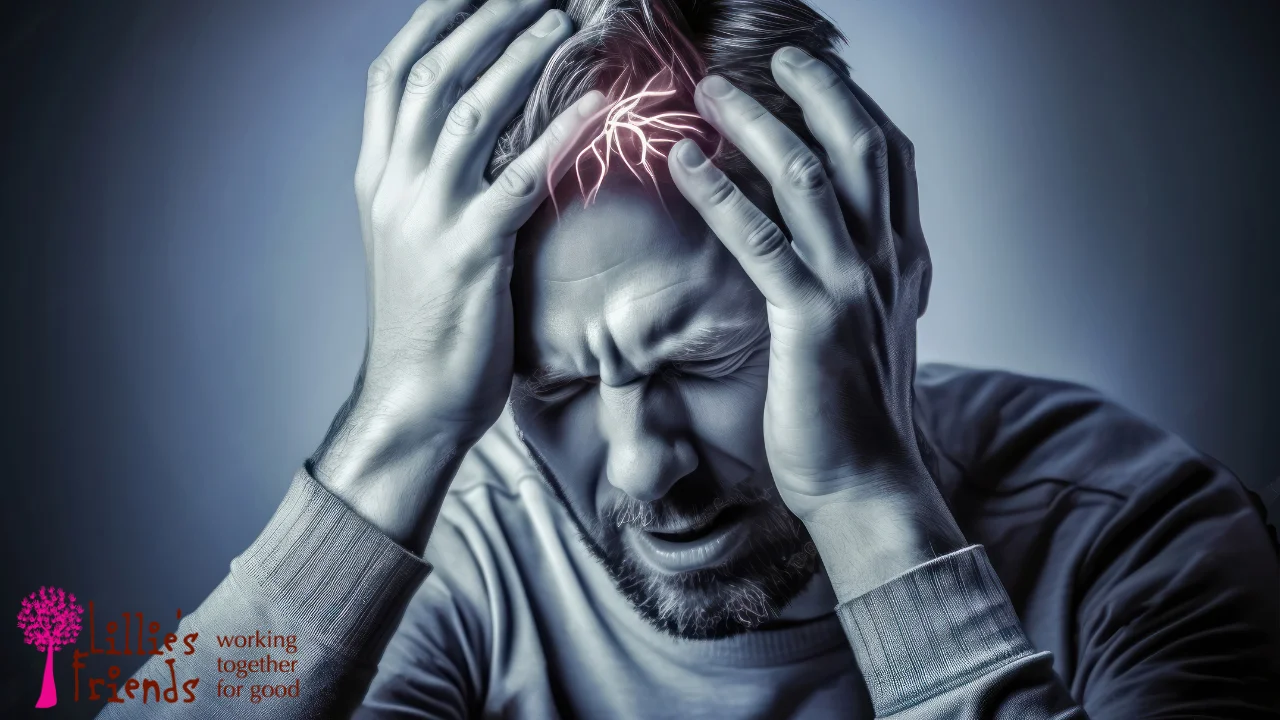Your mental, emotional, and physical health may be negatively impacted for a considerable amount of time after going through a traumatic experience. However, it’s impossible to predict with certainty when the event will happen or how much it will affect your life as a whole. For instance, the same traumatic incident may occur to two persons. However, only one may experience psychological trauma, whilst the other might simply go on without experiencing any long-term consequences.
The distinction between the two often comes down to each person’s capacity for processing the traumatic experience and level of mental stability. It’s common to feel disturbed and unsettled after a stressful or upsetting experience. However, trauma may sometimes result in psychological side effects, such as the emergence of mental illnesses like post-traumatic stress disorder ↗ (PTSD) or acute stress disorder ↗ (ASD).
Because of their similarities, acute stress disorder and post-traumatic stress disorder may be hard to differentiate. Understanding the distinctions between these two mental illnesses is essential to avoiding incorrect diagnoses and inadequate care. This tutorial aims to clarify the differences between acute stress disorder and post-traumatic stress disorder.

Acute Stress Disorder: What is it?
The fourth edition of the Diagnostic and Statistical Manual of Mental Disorders (DSM-V ↗) included acute stress disorder (ASD) as a new diagnosis for the first time in 1994. Since then, the DSM-V, the most recent version, has been made available. When a stressful incident happens within a month of another, ASD is a trauma-related condition. It manifests as acute psychological anguish that happens soon after a traumatic incident that has a big influence on a person’s life. ASD might linger anywhere from three days to a month at most. Stress is a typical post-trauma symptom. Nonetheless, there were two reasons to include ASD as a mental health condition in the Diagnostic and Statistical Manual (DSM).
- Should consider the extreme acute stress responses that occur in the early months after a tragedy.
- to determine whether individuals are severely traumatized and who are either at risk of developing PTSD or who are not just going through a temporary stress response.
The Difference Between Acute and Normal Stress Reactions
Humans often go through periods of stress and emotional breakdown after any kind of catastrophic event or bereavement. However, what makes typical stress responses severe? “Present or experienced to a severe or intense degree” is the definition of acute. Stress usually occurs in three phases. A person moves into the recovery phase after completing these three stress levels ↗. He or she could experience acute or chronic stress, nevertheless, if they are unable to pass through these phases. Knowing these phases and how the body reacts is crucial. As a result, it’s simpler to spot chronic stress symptoms in oneself
There are three phases to stress:
1. Stage of alarm reaction:
This phase describes the first signs and symptoms that stress causes the body to experience. This natural reaction, sometimes referred to as the “fight-or-flight” physiological response, will either prime you to defend yourself (fight) or escape (flight). During this process, many physiological changes take place, including
- An elevation in heart rate
- the stress hormone cortisol’s release
- a surge in adrenaline (to promote energy)
2. Stage of resistance:
At this point, the body begins to mend itself. Less cortisol is released as a result of these modifications, and blood pressure and heart rate start to stabilize. The body goes into recuperation mode, but not before being attentive for a time. Certain stressful circumstances persist over extended periods of time. Should the stress persist and your body stay on high alert, it will gradually adjust and get used to a greater amount of stress.
3. Stage of exhaustion:
Long-term stress may deplete your mental, emotional, and physical resources to the point that your body is unable to cope with stress. You may decide to quit because you think there is no hope left. Symptoms of fatigue include:
- Uncertainty
- Weary
- Exhaustion
- Depression
- Reduced ability to handle stress
Risk Elements and the Origin of ASD
A distressing incident that the individual either experienced or watched is what sets off an acute stress disorder. Studies based on surveys ↗ indicate that between 20 and 90 percent of people have gone through one or more very stressful experiences. Even with this high number, only 1.3-2.2% of people with acute stress disorder went on to acquire chronic symptoms like PTSD.
Traumatic experiences that may have contributed to ASD include
- A loved one’s passing
- The risk of demise or serious harm
- Natural catastrophes
- Auto accidents
- Rape, sexual assault, or abuse at home
- finding out you have a terminal illness
- Having a catastrophic brain injury and living
Acute stress disorder may be caused by the risk factors listed below:
- mental illness
- Insufficient education
- Past occurrences of distressing incidents
- Past medical history of mental illness(es)
- Personality disorder(s)
- Molecular Biology
- Trauma severity
- Infirmity
Post-traumatic Stress Disorder: What Is It?
A severe trauma-related condition called post-traumatic stress disorder (PTSD) was once referred to as combat fatigue syndrome or shell shock. It takes place when recurring bodily anguish is brought on by recollections of a traumatic incident, such as a sexual assault or war. PTSD is classified as a trauma- and stressor-related disorder in the DSM-5. When acute stress reaction symptoms last more than a month, post-traumatic stress disorder develops. Most persons who have been through a traumatic event will feel shocked, angry, nervous, and frequently guilty. These responses are typical, and most people eventually get over them. PTSD sufferers, however, continue to experience similar emotions, if not worse ones. People may have such intense emotions that they are unable to function normally. Following a traumatic event, people with PTSD struggle to function normally and have symptoms that persist longer than a month. Anger outbursts and general irritation may also be caused by PTSD symptoms.
Causes and Risk Factors of PTSD
Each is affected by traumatic circumstances differently. Everybody may handle stress, anxiety, or dangers associated with a traumatic experience in a different way. Not every person who has experienced tragedy will have PTSD. The level of assistance and support that friends, family, and professionals provide is correlated with the intensity of PTSD symptoms.
A person is more likely to get PTSD if they have:
- was abused as a youngster.
- exposed to potentially fatal scenarios on several occasions.
- a strong sense of dread or powerlessness.
- seen a dead corpse or another person in agony.
What Is the Symptomology of Childhood PTSD?
Adolescents and children are more perceptive than adults. As a result, they are susceptible to severe trauma responses. Children’s symptoms may sometimes mimic those of adults, although they may vary or take other forms. The symptoms may appear in the youngsters as early as age six.
Children may display signs of PTSD by:
- wetting the bed after acquiring toilet skills
- Being unable to speak or forgetting how to do so
- Playing out the terrifying incident
- being strangely attached to a parent or other adult
Adolescents and older kids may also have adult-like symptoms of post-traumatic stress disorder. They often start acting in ways that are rude, disruptive, or harmful.
PTSD vs Acute Stress Disorder: Signs and Symptoms
Symptoms of acute stress disorder and post-traumatic stress disorder may arise shortly after a stressful event. The symptoms of an acute stress disorder need to be present for three to thirty days in order to be diagnosed. The symptoms of PTSD must be present for a minimum of one month. After a traumatic event, one may develop PTSD and acute stress disorder. People usually experience severe dread and powerlessness, which leads to the development of both physical and psychological problems. Stress chemicals such as adrenaline (epinephrine) and excessive nervous system activity are usually the source of the physical symptoms.
DSM-V Acute Stress Disorder Symptoms.
Symptoms of acute stress disorder (ASD) often start to show up soon after a distressing incident. For an ASD diagnosis, they have to be present for three to thirty days. Physical symptoms usually appear minutes or hours after a stressful occurrence and go away in a few hours or days. But sometimes, the symptoms persist for a few weeks. A person could feel any of the following signs:
- Palpitations, or heart palpitations
- breathing difficulties
- chest ache
- Headache
- stomachache
- emesis
- Perspiration
Symptoms of intrusion: These occur when a person’s mind keeps replaying a traumatic event in memories, nightmares, or flashbacks.
A sour mood is characterized by melancholy, pessimism, and unhappiness.
Those who have avoidance symptoms will go out of their way to avoid thinking about, talking about, feeling, or going anywhere that is connected to their traumatic experience.
Arousal symptoms include difficulty focusing, mood changes, violence, both physical and verbal, and insomnia and other sleep issues. In addition, you can experience tightness or tenseness, as well as fear.
Dissociative symptoms: These symptoms include a confused perception of reality, an inability to identify one’s environment, and difficulty remembering specifics of a traumatic event.
DSM-V Symptoms of PTSD
Four categories are often used to categorize PTSD symptoms. The symptoms might change over time or between individuals. For PTSD to be properly diagnosed, symptoms must persist for more than one month.
1. Symptoms of intrusion (one necessary)
The following are some ways in which the traumatic occurrence is constantly replayed:
- unpleasant or unwanted recollections
- memories of past occurrences
- Fears
- distressed feelings after the reliving of horrific experiences
- Physiochemical reaction to traumatic memory exposure
2. Avoidance (one is necessary)
Following a traumatic event, an avoidance of the trauma-related circumstances, such as
- ideas or emotions pertaining to trauma
- avoiding disturbing outside events
3. Adverse changes in mood and thought processes (two necessary)
unpleasant thoughts and emotions that arise from the trauma and worsen in one or more of the following ways:
- unable to recall crucial traumatizing information
- An increase in negative ideas and conclusions about oneself or other people
- Blame on oneself (usually exaggerated) or blame on others for the trauma
- Absence of enthusiasm for activities
- adverse impact
- a sense of loneliness
- unable to experience any benefits
Changes in Arousal and Reactivity
Arousal and reactivity associated with trauma that started or became worse after the experience in one or more of the following ways:
- Either hostility or irritability
- Risky or damaging actions
- Problems sleeping
- Overawareness
- difficulty focusing
- increased startle response
As was previously noted, the symptoms may lead to serious issues with relationships and in social or professional settings. They often make it difficult for you to carry out your usual daily activities.
PTSD and Acute Stress Disorder: Distinctions and Commonalities
After surviving a traumatic event, a person could find it difficult to deal with their emotions and get over their body’s and mind’s natural stress reaction. Acute stress disorder appears right after the traumatizing event. Occasionally, the trauma leads to the long-term development of post-traumatic stress disorder. These illnesses have many of the same symptoms. For the greatest healing results, both need early intervention and therapy. ASD and PTSD are comparable disorders; however, they are also not the same in other respects.
How PTSD and Acute Stress Disorder Differ
Acute stress disorder and post-traumatic stress disorder have many symptoms. But the length of the two circumstances differs from one another. The duration of acute stress disorder is no more than one month. On the other hand, PTSD may persist for more than a month or even years. Based on the DSM-V assessment, acute stress disorder was present in half of the PTSD patients in the beginning. The focus on dissociative symptoms associated with acute stress disorder is the second way that ASD and PTSD differ from one another. Feeling numb or being unable to recall terrible events are among the dissociative symptoms that occur soon after trauma and hinder the victim’s capacity to cope. PTSD is predicted by these dissociative symptoms.
The following are the main differences between PTSD and ASD:
| Acute Stress Disorder | PTSD | |
|---|---|---|
| Symptom Onset | Hours or days after the stressful occurrence, symptoms start to show up. | Following the incident, symptoms may manifest instantly or within a few days, or they may take months or even years to manifest. |
| Duration of Symptoms | The duration of the symptoms is three days at the minimum and four weeks at the most. | PTSD symptoms have to last for a minimum of four weeks. |
| The Number and Nature of Symptoms | Nine or more symptoms from any of the five categories may apply to you. (For instance, agitation, avoidance, dissociation, intrusion, and poor mood). | You will have negative mood swings and elevated arousal in two or more of your symptoms, along with one or more overwhelming and avoidant ones, if you have PTSD. |
| Recommended Treatment | For acute stress disorder, cognitive-behavioral therapy (CBT), exposure therapies (ERP), and sometimes medication are advised. | Treatments for PTSD include cognitive behavioral therapy (CBT), eye movement desensitization, extended exposure therapy, and reprocessing (EMDR), imagery rehearsals, stress inoculation therapy, and, in some situations, medication. |
The Similarities Between Acute and Posttraumatic Stress Disorders
Both PTSD and acute stress disorder are trauma-related conditions that arise from personal or witnessed trauma. Acute stress disorder and post-traumatic stress disorder (PTSD) have many of the same symptoms. Both diseases make it difficult for a person to operate in one or more spheres of their life, such as their family and career.
PTSD and ASD have a lot of symptoms. Among these typical symptoms are
- severe emotional and physical discomfort brought on by flashbacks to horrific events.
- inability to experience happy, peaceful, contented, or affectionate emotions.
- incapacity to remember a distressing experience in whole or in part.
- You’re making every effort to stay away from anything that triggers memories of the trauma (i.e., people, places, thoughts, emotions, and items).
- heightened anger and irritation
- It’s challenging to relax or lower your defenses.
- severe fear response
- issues relating to sleep
- inability to concentrate
Is it possible for PTSD to develop from acute stress disorder?
While not all individuals with ASD will develop PTSD, studies reveal that more than 80% do so six months later. PTSD and acute stress disorder are closely connected; therefore, they may cause each other. However, a number of things would determine whether it occurs or not. The majority of people with acute stress disorder, according to the site, get well on their own four weeks or less after the event has gone. Furthermore, a patient may reduce their risk of acquiring PTSD if they engage in or receive CBT for ASD.
Whether or not acute stress disorder develops into post-traumatic stress disorder (PTSD) depends on the following factors:
- Further pressures that arose after the horrific event
- Using unhealthy coping techniques
- adverse justifications for their severe stress responses
- Avoiding circumstances might lead to PTSD in certain people.
PTSD vs. Acute Stress Disorder: Treatment
It’s not easy to go through a terrible experience and then to face the accompanying emotional agony. You may have moments when you feel completely exhausted. Thus, in order to keep the emotional anguish from becoming worse, it is imperative that it be addressed as soon as possible. Specific aims are kept in mind by mental health professionals while treating PTSD and acute stress disorder. The objective for ASD is to avoid PTSD and stop symptoms from becoming worse. Furthermore, since the symptoms of ASD are less severe than those of PTSD, there is a greater prospect of recovery. On the other hand, PTSD therapy is more regimented in order to address the trauma’s lingering repercussions.
Therapy based on cognitive behavior (CBT)
Trained professionals give CBT for PTSD and ASD. Usually, these sessions span more than six 60- to 90-minute weekly sessions. Depending on the severity, more sessions may be required, particularly when treating PTSD. CBT for ASD is administered at least two weeks after exposure to stress. Therapy should be started at a period that minimizes conflict with other stressful events that may have arisen from the trauma. For example, if the patient is preoccupied with things linked to the trauma, such as discomfort, surgery, court cases, moving, or other stresses, they could find it difficult to concentrate on their therapy. Cognitive restructuring, exposure, and patient education are common components of trauma-focused CBT.
Exposure Counseling
Another element of trauma-focused CBT is exposure. Through exposure therapy, patients are assisted in facing their frightening memories and circumstances. Via emotional processing brought about by reliving the experience via exposure, the trauma becomes less painful. The person may encounter traumatic events until they no longer elicit such powerful feelings and they become apparent as harmless by frequently engaging in painful memories in a safe setting or way. Both in vivo and imaginal exposure are part of exposure treatment. In order to attain extinction learning, the patient gives a thorough account of the traumatic event. The traumatic event is then verbally relived by the patient and the therapist (typically for at least 30 minutes). By repeatedly experiencing the recollection, the patient might therefore learn that the vivid reminder of the trauma (i.e., the memory) is no longer a danger and does not have negative consequences. A similar technique is used during in vivo exposure to make sure the patient stays out of scenarios that they dread in their everyday lives, solidifying the learning signal that flashbacks are not to be concerned about.
The treatment known as Eye Movement Desensitization and Reprocessing (EMDR)
EMDR
Therapy is a method for reducing stress. Both trauma and post-traumatic stress disorder (PTSD) are treated with it. During EMDR ↗ treatment sessions, you briefly relive traumatic or triggering events as the therapist gives you eye movement instructions. EMDR is believed to be beneficial because, for the most part, recalling unpleasant situations is less emotionally taxing when your focus is redirected. You may experience ideas or memories using it without having a severe mental response. This method is said to decrease the long-term effects that memories and ideas have on you.
Treatment using Narrative Exposure
A treatment for trauma disorders is narrative exposure therapy ↗, which is especially useful for those who have gone through complicated or many traumas. It has been most often used in community contexts and with those who have experienced trauma as a result of social, cultural, or political factors (e.g., refugees). Four to ten NET sessions are often offered at a time to small groups of individuals. It may also be provided on an individual basis, however. It is well known that a person’s self-perception of their life narrative affects how they see their experiences and general well-being. One develops a persistent feeling of trauma and anguish when their life narrative is centered on catastrophic events. The memory of a traumatic incident is polished and understood via the expression of the story.
Drugs
Acute stress disorder (ASD) symptoms have been investigated for treatment with selective serotonin reuptake inhibitors (SSRIs), various antidepressants, benzodiazepines, propranolol, morphine, hydrocortisone, and docosahexaenoic acid, as well as for preventing the onset of post-traumatic stress disorder (PTSD). SSRIs and other antidepressants are useful in treating PTSD and ASD, according to a number of randomized studies on pharmaceutical therapies for both disorders. The best way to find the right drug for your situation is to speak with your healthcare professional.
Conclusions Regarding This Guide
Everybody experiences several traumas throughout their lives. However, those who have severe, transformative, or life-threatening events may have a higher chance of acquiring ASD or PTSD. Acute stress disorder and post-traumatic stress disorder differ in a few specific ways. Whatever a person may be suffering from, receiving medical attention early on can help them get well. Treatments for these diseases are more successful now that more is known about them and has been done to address them. Seek out expert assistance right now!
FAQ
Is it possible to have acute stress disorder and PTSD simultaneously
An ASD consequence is PTSD. A person diagnosed with ASD may still have symptoms that might develop into PTSD in the future. As a consequence, PTSD may develop from acute stress disorder rather than happening simultaneously.
What distinguishes ordinary stress from catastrophic stress?
Stress is a typical physical response to every obstacle in life. As soon as the task is over, it normally goes away and becomes less severe. On the other hand, traumatic stress may be lethal and has a profound effect on an individual’s ability to operate.
What is the timeframe between PTSD and acute stress disorder?
Acute stress disorder lasts for the first few days after a traumatic incident, but post-traumatic stress disorder is a lasting consequence.
Is acute stress disorder reversible?
Indeed! Acute stress problems often resolve on their own. Early diagnosis and therapy prevent it from becoming worse or developing into PTSD.











